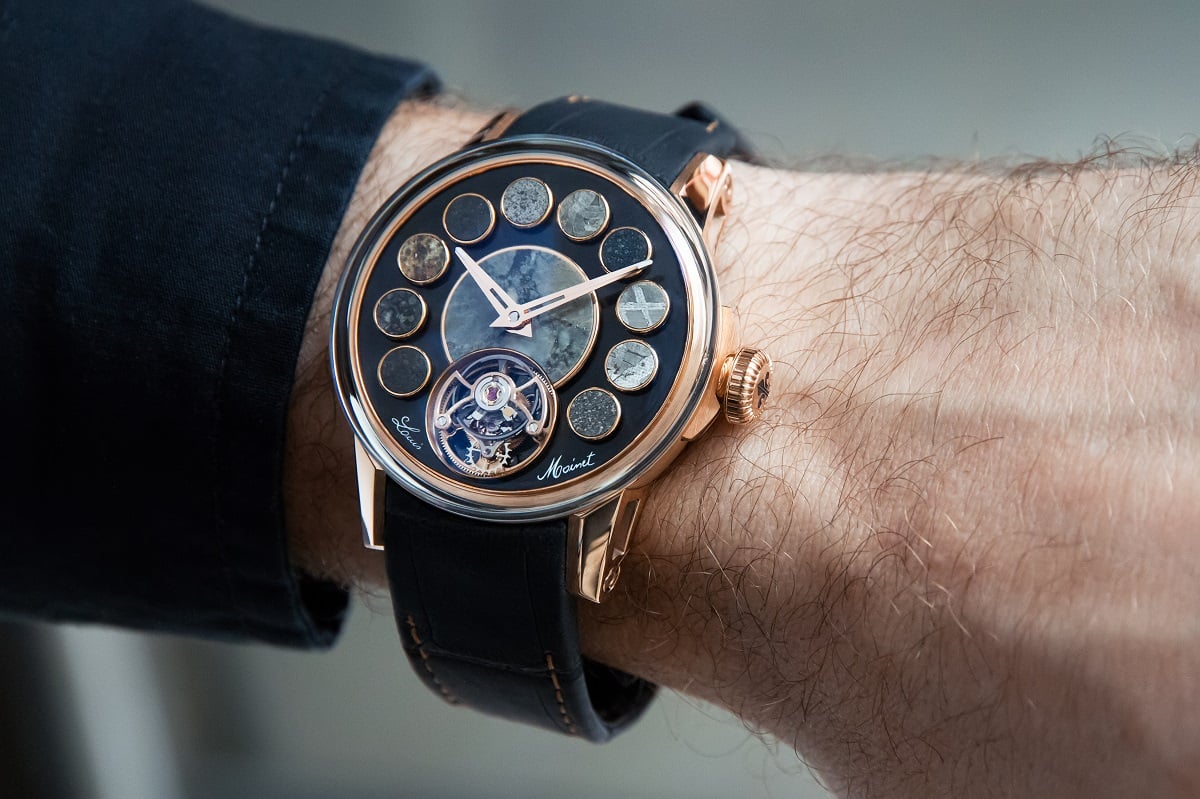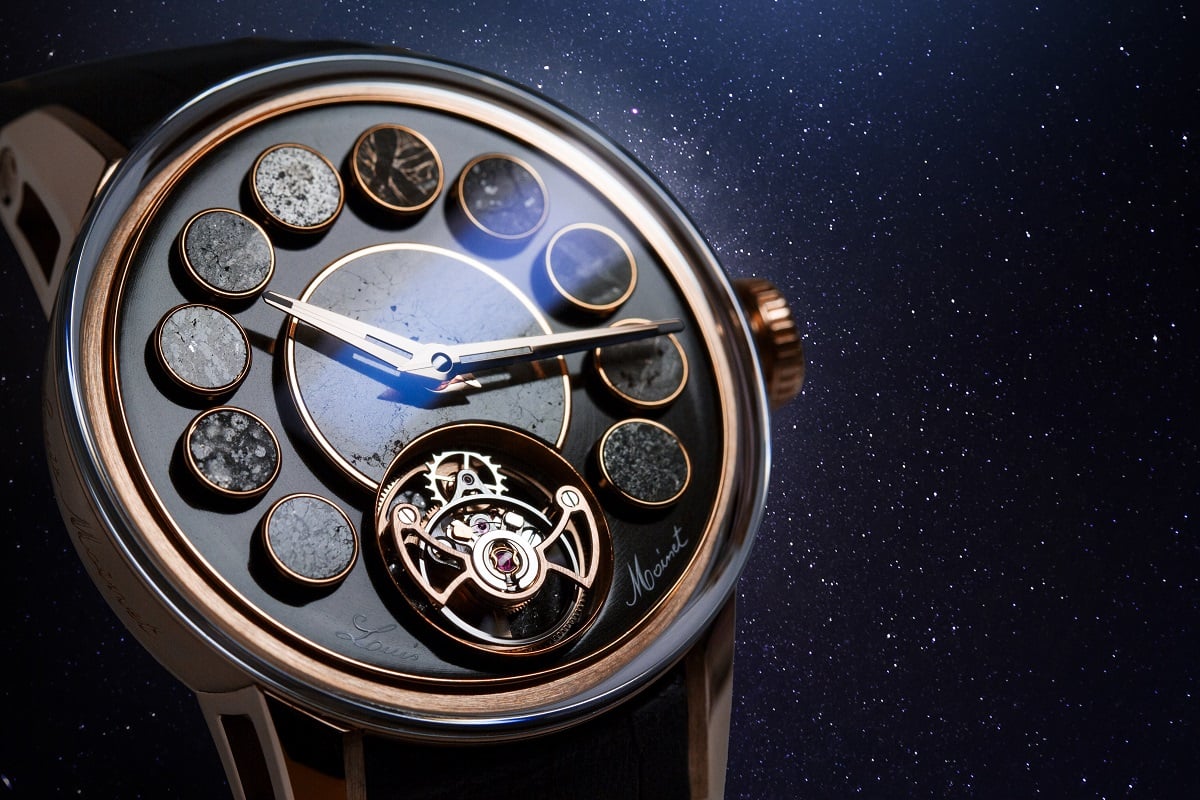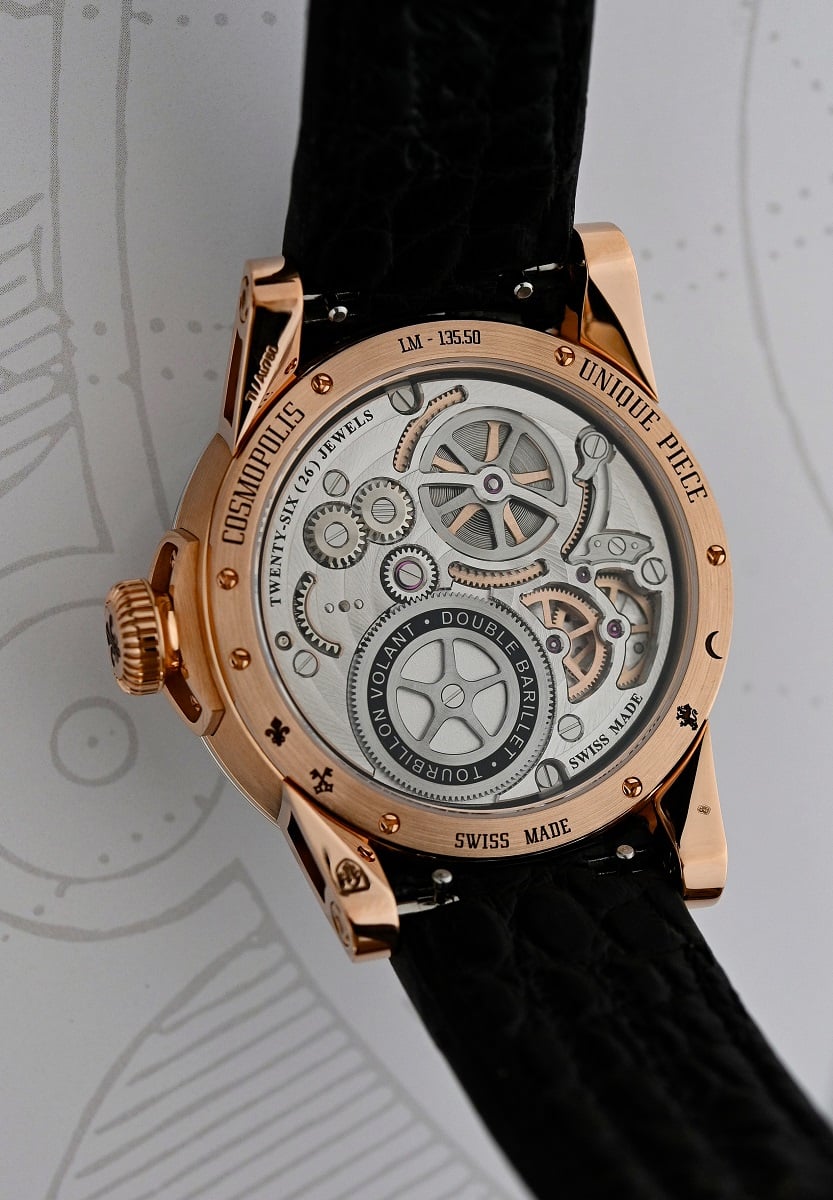The Record-Setting Louis Moinet Cosmopolis Will Leave You Lost In Space And Time
The Louis Moinet Cosmopolis is what happens when the earth and sky collide. On the dial of this unique piece, 12 fragments from outer-worldly meteorites found their place. It took Jean-Marie Schaller, owner and creative director of Louis Moinet, 20 years to collect the different stones. They fell from the heavens onto our planet after traveling billions of kilometers through the universe.
Time is the central element in every watch, but the Louis Moinet Cosmopolis adds another dimension. I’m not talking about complications, functions, or other mechanical examples of artisanal excellence. No, I’m talking about a philosophical dimension. It all starts with Louis Moinet’s leader Jean-Marie Schaller, a man who’s obsessed with meteorites.
The Louis Moinet Cosmopolis is “a microcosm of the macrocosm”
Schaller says, “I’ve been collecting exceptional meteorites for twenty years. Each has its own story. My collection contains rare pieces, like the lunar meteorite Dhofar 461, which is known for its white-speckled interior. And I have a valuable meteorite from Mars that is one of 300 samples identified to this day. I also have the famous Allende, the oldest rock in the solar system, and Erg Chech, the oldest magmatic rock known, which comes from a protoplanet that vanished at some point. As for the Jbilet Winselwan, what makes it remarkable are the traces of amino acid, which might well be the first signs of life in the cosmos.
The Sahara 97093, on the other hand, distinguishes itself through its micro-diamonds, which took shape at the heart of exploding stars that became supernovas. These fascinating stories were the creative spark that gave birth to the Cosmopolis. Even more than a great watchmaking work, the Cosmopolis is a historic and scientific journey, a microcosm of the macrocosm.”
The Cosmopolis will have you lost in space and time
On the dial of the Cosmopolis, you will find 12 fragments of meteorites. These fragments were formed in outer space well before our time. They are rocks that traveled for billions of kilometers through the immenseness of the universe before landing on our planet. What are the odds? I can’t tell you. Can you tell me? Anyway, because of the stone’s origins and rarity, the price per gram surpasses that of gold and platinum combined. That’s the price you pay for stuff that witnessed the shaping of our solar system. Try to imagine having a fragment of a meteorite in your watch that contains the first known traces of life in the cosmos.
This watch tells stories of the stars we are just beginning to comprehend. And this watch also tells the time in both a practical and philosophical way. It will tell you that you’re five minutes late for the meeting but also that, in the grand scheme of things, it doesn’t really matter.
The heavenly Cosmopolis
The heavenly treasures on the dial of the Louis Moinet Cosmopolis mean that this watch received a Guinness World Records title for the “most meteorite inserts in a watch.” It’s also the only watch of its kind since the Cosmopolis in a unique piece. The name Cosmopolis tells of the connection between our world and the infinite heavens. It brings together the cosmos and its mysteries and the city (polis), the place where we live and where the watch was made.
In the center of the dial, the rarest and most captivating stone of all, a lunar meteorite, shimmers. Have you seen it before? If you have, you might have read Thomas’s article about the Louis Moinet Jules Verne Tourbillon “To The Moon.” More extraterrestrial stuff shines on the tourbillon cage. It’s a fragment of black chondrite that graces the beating heart of the mechanism. The ten other special fragments sit on a brushed dark gray dial. These celestial gems are witnesses to the origins of our solar system and bearers of billion-year-old stories. And apart from being slivers of the universe’s history, they’re also glimpses of eternity.
The down-to-earth side of the Cosmopolis
Enough with the endless and untouchable universe and on with some down-to-earth stuff. As you probably noticed, at 6 o’clock, there’s a famous technical solution to defy gravity. The off-center flying tourbillon is part of a hand-winding movement with two mainsprings that provide 96 hours of power reserve. The two mainspring barrels are mounted upside-down on top of each other, a system that is called volte-face in French.
The movement, which can be observed through the sapphire case back, beats inside an 18K 5N rose gold case. The 40mm diameter of the Cosmopolis is quite modest for an over-achieving record breaker. With its fluid lines, the case also stands out thanks to its open-worked lugs. Topping it is the domed sapphire glass that creates space inside and allows light to make the differently colored meteorite fragments below shine with an outer-worldly glow.
Take a look at Louis Moinet’s official website to find out more about the Cosmopolis and other compelling creations that defy space and time.






